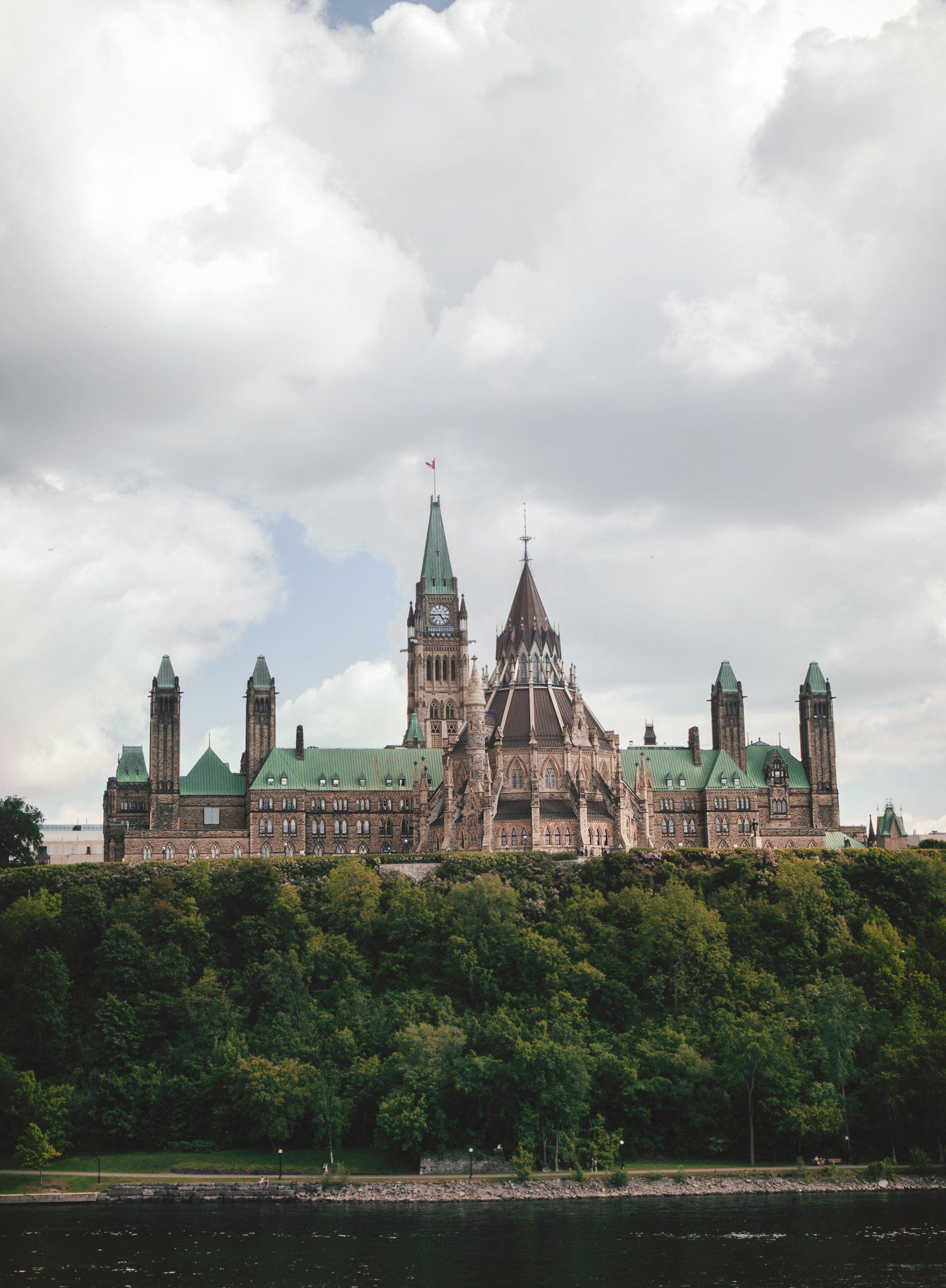




T’was the month before Christmas, when all through the House (of Commons), legislators were passing bills to try and address Canada’s housing crisis.
There has been a furious pace to housing law and policy amendments over the last three months, particularly in BC. If you’ve missed some, don’t feel bad, even industry professionals have had troubles keeping track of the changes.
In this edition of the Bird’s Eye View, we provide a summary of 7 different amendments to housing law (one federal change, and six provincial changes), and share our thoughts on how we think these changes will impact investors.
The Big Federal Change
1. Dropping GST on Purpose-Built Rental
Link to Bill C-56
Summary: Increases the GST rental rebate on new residential rental developments from 36% to 100% (functionally, no GST). The rebate will apply to any building with at least 90% of its units designated for long-term rental and projects must have at least four private units to qualify, or 10 individual units for student or senior living residences. To qualify, projects must start after September 13, 2023, begin before 2031 and complete before 2036.
*Note: Some Provinces, like Ontario, are following suit by waiving their Provincial Sales Taxes (or HST) on the same. In BC, PST is already waived on purpose-built rental.
Hawkeye Commentary: Pay less taxes…need we say more? This is an unequivocal positive for real estate development, but it also isn’t the panacea that some have made it out to be. In our view, this change will likely spur some additional supply, but it probably doesn’t provide enough juice to make previously unattractive deals make sense in this higher interest rate environment. When you find a deal that can stand on its own though, this is a welcome addition.
Status: Completed three readings in the House of Commons and completed third reading at the Senate on December 14, 2023. Bill is awaiting royal assent, which should happen imminently.
BC Provincial Changes
2.
Short-Term Rental Accommodation Restrictions
Link to Bill 35
Summary: Restricts short-term rentals (AirBnB, VRBO, etc) to principal residences, which includes secondary suites, carriage homes, etc. on the property of a principal residence. Short-term rentals are defined as 90 days or less. The legislation applies in municipalities with populations over 10,000, excluding the 14 resort municipalities (Whistler, Tofino, Revelstoke, etc.).
Hawkeye Commentary: Let’s first get this out of the way. This is a
massive
over-reach into private property rights.
Some of BC’s ~28,500 short-term rental properties are in principal residences and will continue to operate. Others will be pushed into the long-term rental housing market as intended (and potentially slow rental growth rates), though we suspect that many of these units will also be listed for sale, as some owners don’t want the hassle of being long-term rental landlords in BC. It’s too early to call the proportional effects of this one, though given hotel undersupply, tourism may take a hit in some markets.
Status:
Bill passed, is law as of October 26, 2023.
3. Small Scale Multi-Family Housing and Fewer Public Hearings
Link to Bill 44
Summary: There are two major changes in this Bill. First, multi-unit housing (3-6 units depending on lot size) is permitted on all single-family lots in municipalities with more than 5,000 population. Second, where a residential development is consistent with the City’s Official Community Plan, no public hearings will be required for rezonings.
Hawkeye Commentary: Fewer public hearings is a loss for NIMBY’s and a win for everyone else. This legislation will reduce entitlement timelines and investor risk through that process. The primary knock here comes from some of the municipalities that feel the small scale multi-family changes are a blunt approach that undermines their planning and systems, forcing them to allocate resources to these small lot files and detracting from more impactful initiatives.
Status: Bill passed, is law as of November 30, 2023.
4.
Transit-Oriented Development Areas
Link to Bill 47
Summary: Sets density thresholds near transit hubs (ie: Skytrain stations and bus exchanges) and removes parking requirements. These density thresholds act as a floor, such that municipalities can have higher density, but they cannot reduce it lower than the amount set out by province.
Hawkeye Commentary:
This Bill is likely a net win for housing availability, affordability and investment. However, the Province’s claim that this bill could generate an additional 100,000 housing units over 10 years in Transit Oriented Areas seems wildly overblown. BC has been developing ~40-48k housing units per year for the last 5 years (see BC Stats), so in context, adding an average of 10,000 units per year is a jump of 20-25%.
Being allowed to develop higher density is a significant part of the equation, but it doesn’t trump economics. These Transit Oriented Areas are mostly already developed. Re-development is often expensive, capital is finite, and land prices will adjust upwards to reflect the new permitted density. Just because developers will soon have permission to build at higher density doesn’t necessarily mean that it will make economic sense to do so.
Status: Bill passed, is law as of November 30, 2023. Municipalities must designate Transit Oriented Development areas that meet provincial standards and remove parking requirements by June 30, 2024.
5. Development Infrastructure Financing
Link to Bill 46
Summary: Development Cost Charges (DCCs) and Development Cost Levies will be abolished and replaced with Amenity Cost Charges. The aim is to make infrastructure development charges more transparent and predictable from the outset of a project. In addition, this will allow municipalities to offset the costs of new categories of infrastructure such as fire halls, police facilities, daycares and solid waste facilities, in addition to the previously existing categories of water, sewer, roads, parks, and drainage.
Hawkeye Commentary: When the system is fully rolled out, this change should add cost certainty for developers and speed up the development process, both are winning features. On the negative side, this bill will likely result in municipalities charging higher development fees, as they now have additional categories of infrastructure to raise funds for, where previously, they were dependent on using taxation for that infrastructure. We will be watching for this in our underwriting.
Status: Bill passed, is law as of November 30, 2023.
6. New Building Code
Link to BC Building Code webpage
Summary: Changes to increase building safety in earthquakes (seismic requirements) and increase accessibility.
Hawkeye Commentary: The accessibility changes are needed and given the real risk of earthquake in BC, the earthquake measures may provide great value over time, though both of these will add to initial building costs and reduce affordability (similar to the BC Energy Step Code Program,
which we wrote about previously).
Status: 2024 Building Code passed, though it doesn’t come into force until March 8, 2024, and the earthquake requirements don’t come into force until March 10, 2025.
7.
Single-stair Egress
Announcement on Exploring Single-stair egress
Summary: BC will explore options for allowing single-stair egress in the Building Code (think one staircase in multi-family structures instead of the currently required two).
Hawkeye Commentary: Many of the experts we associate with assert that this would be a huge positive for affordability (and also building aesthetics), as it would allow for more varied and more efficient building design. Single-stair egress is common in Europe and parts of Asia.
Status: Consultation phase, no legislation proposed to date.
Conclusion
The government has been doling out Christmas gifts this season, and while some will be great for investors, the jury is still out on others.
We love the GST rebate, removal of public hearings in some situations, transparency on development fees, the potential for single-stair egress and increased options for densification. However, the encroachment on property rights by prohibiting short-term rentals is concerning and the changes to infrastructure financing and the new building code will likely increase building costs as these changes are implemented in 2024-2025.
From all of us here at Hawkeye, we wish you and your family the very best this holiday season and a prosperous 2024!





Investment
Company
Exempt market investments are not guaranteed and are not covered by the Canada Deposit Insurance Corporation or by any other government deposit insurer. Investment products sold in the exempt market are generally considered high risk as they are not covered by deposit or investor protection insurance; regulators do not review any of the offering documents for completeness and, in jurisdictions where an Offering Memorandum is filed, Regulators may not review them for completeness or accuracy; issuers of exempt products are not subject to the same ongoing disclosure obligations as public issuers; many exempt products are not as liquid as publicly-traded securities; exempt products are often subject to a greater degree of “key person” risk than more widely held securities; they are purchased pursuant to an exemption from the usual protections accorded to investors in publicly-traded securities and under a prospectus offering; and there may be risks other than these related to the specific investments purchased. There can be no assurances that the investment will be able to maintain its net acquisition value or to produce projected income. Investment values change frequently and past performance may not be repeated.
This Website is intended for Canadian residents only and the information contained herein is subject to change without notice. This Website does not constitute an offer or solicitation in any jurisdiction in which such offer or solicitation is not authorized or to any person to whom it is unlawful to make such offer or solicitation. This Website is for general information only and is not intended to provide specific personalized advice including, without limitation, investment, financial, legal, accounting or tax advice. Please consult an appropriate professional regarding your particular circumstances. © Copyright 2022, Hawkeye Wealth Ltd. All Rights Reserved.